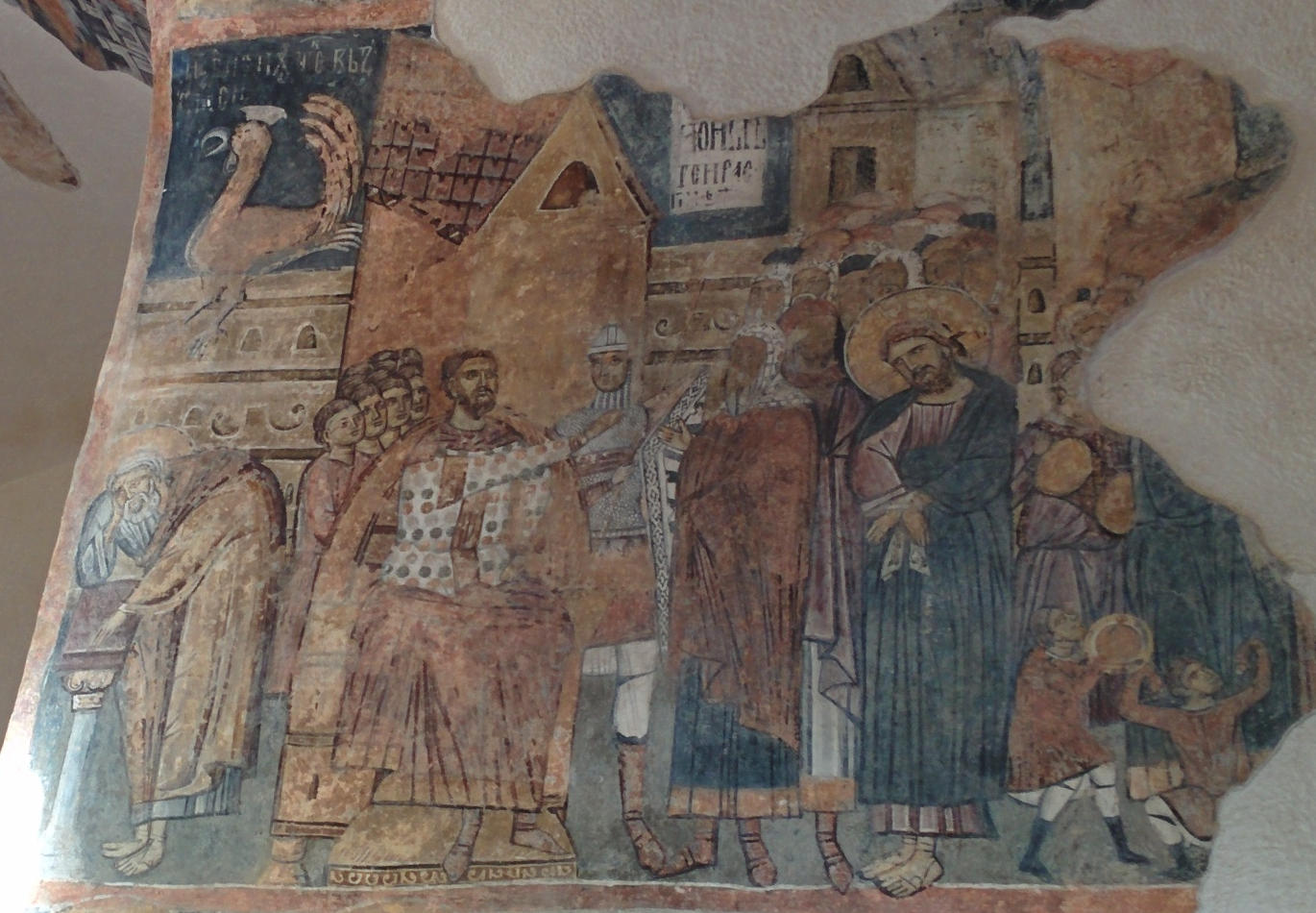
Try Amazon Fresh
Peter Denies Christ / Christ before Pilate.
Fresco in Zemen Monastery, Pernik Region, c.1354-60AD.



Photo by Kamen Handziev
The soldier is referenced as figure 52 in Armies of the Middle Ages, Volume 2 by Ian Heath
Figure 52, from a Bulgarian mural at Zemen, dates to c.1354-60. He wears a coat-of-mail with leather pteruges over a tan quilted leather corselet, plus an iron helmet and a mail coif. His tunic is red, trousers are unbleached wool, and boots are red-brown. The shield, bearing a similar (but inverted) pattern to that of 50, is white and blue. The fact that his tunic is red is significant since this had always been the predominant uniform colour of the Byzantine army, and Gregoras still refers to Byzantine uniforms in the mid-14th century. Pseudo-Codinus’ ‘Book of Offices’ of similar date says that Vardariote guardsmen wore red (plus, on ceremonial occasions at least, a Persian or Turkish hat edged in yellow), and that the Tzakones wore sky-blue with 2 white lions face-to-face on breast and back. The Kortinarioi too wore red, with black boots and assorted leggings.
Idris al-Bitlisi, writing in a military context, also stated that in Orkhan’s time ‘the Greeks . . . wore scarlet woollen garments and red, yellow and black caps’. The ‘Romance of Alexander the Great’ ms. mentioned above invariably depicts uniforms red or blue, with boots red, brown or black.